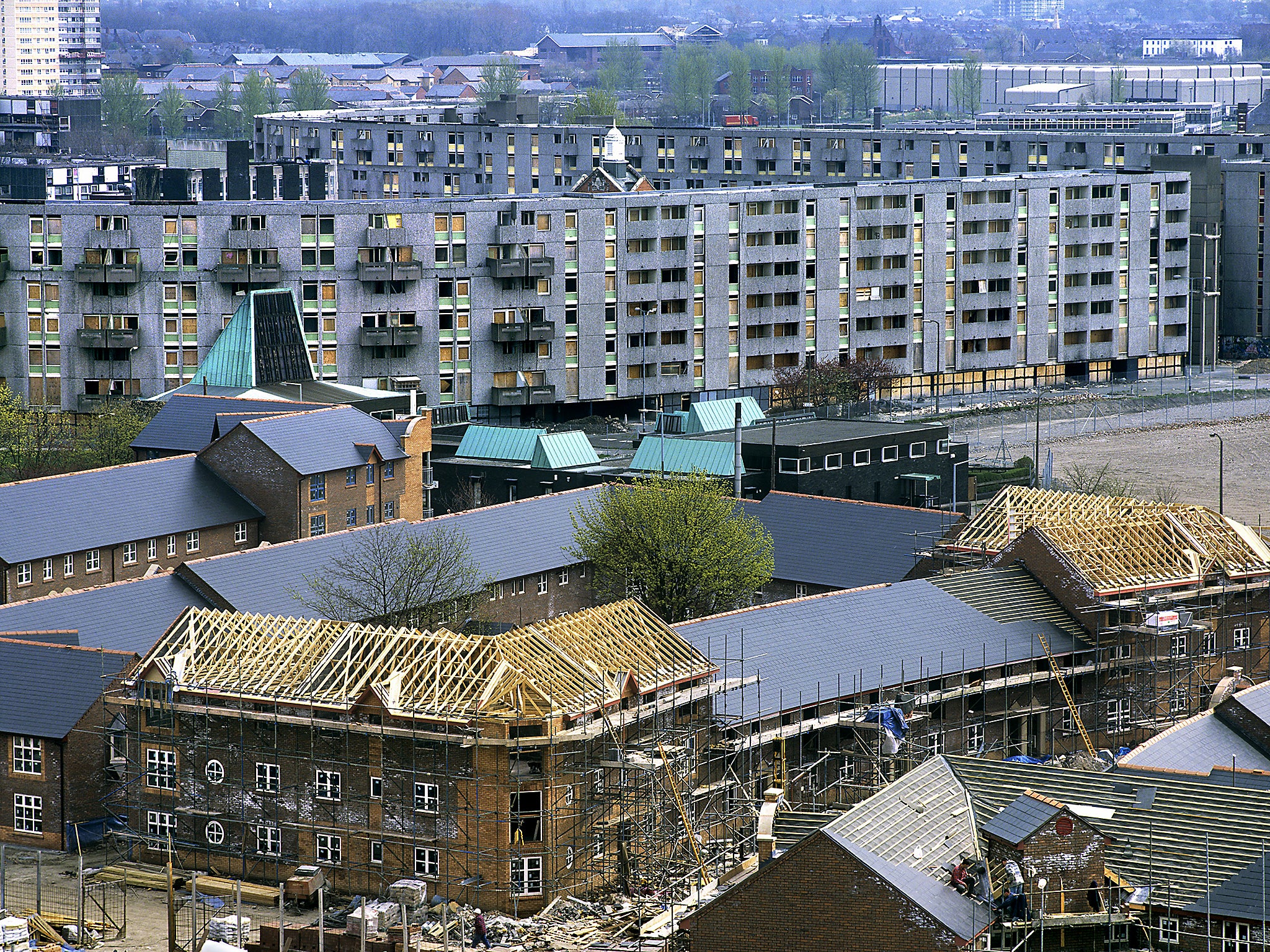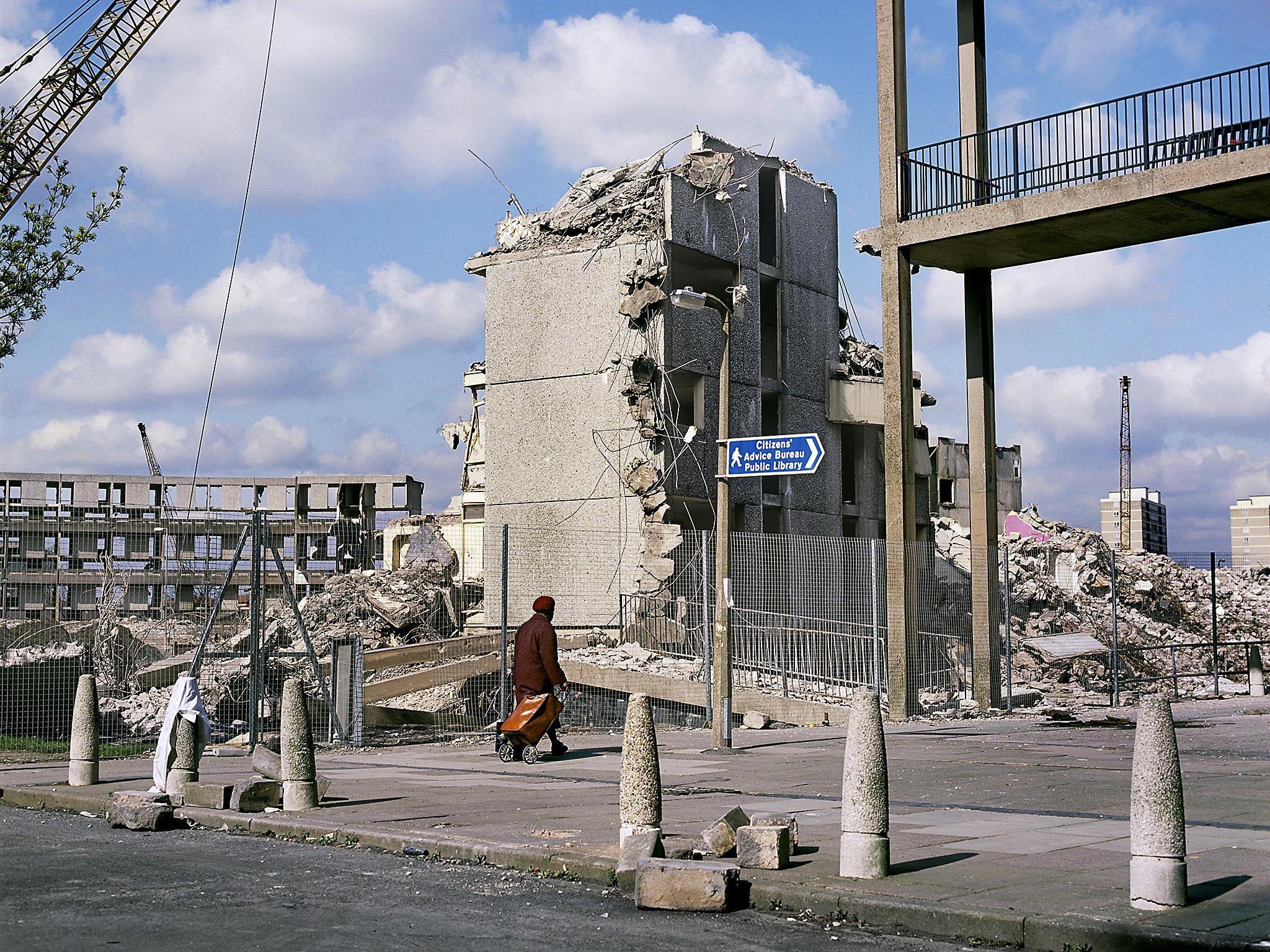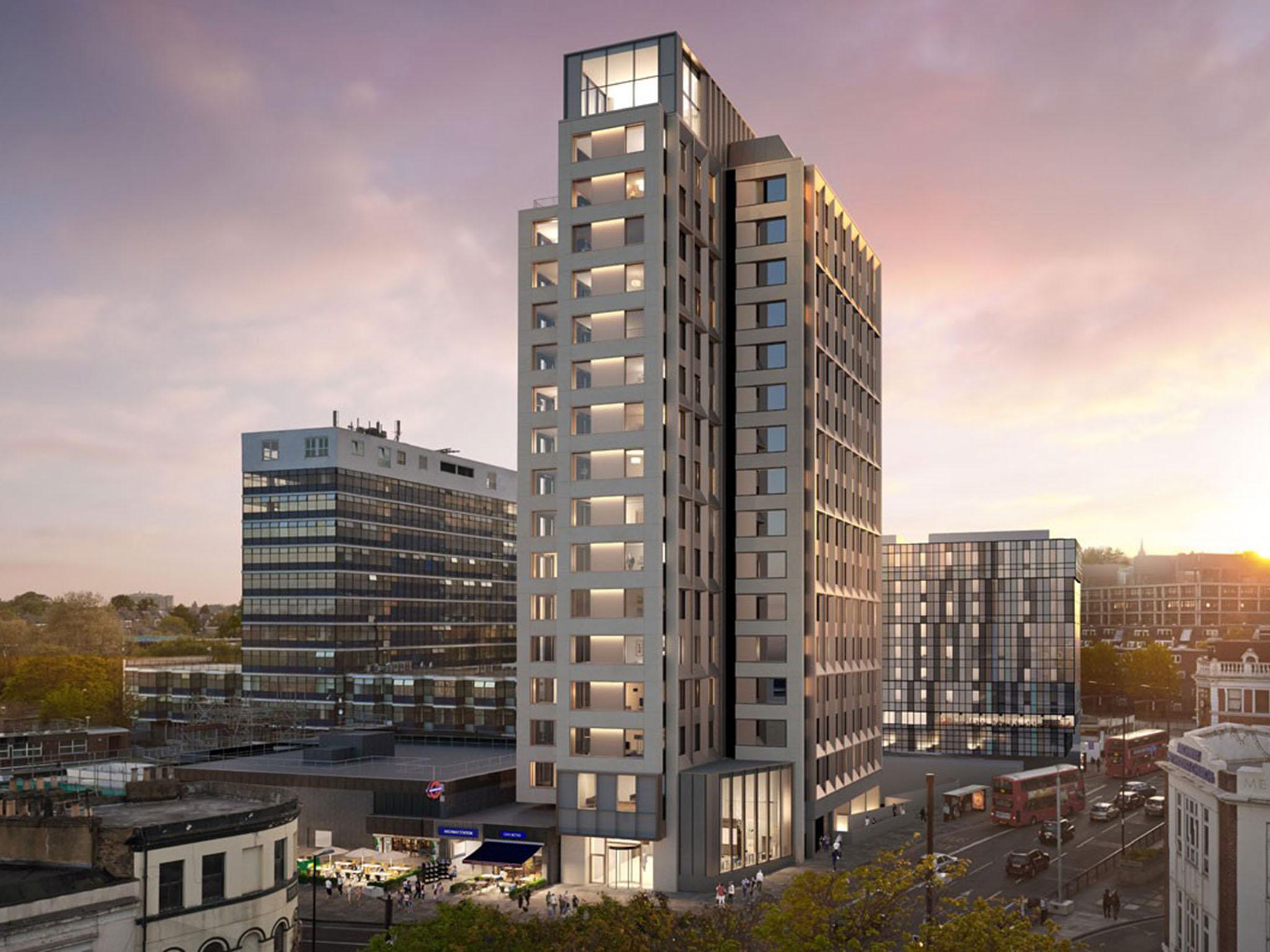Modernist dream, dystopian nighmare: the ups and downs of tower blocks
From the post-war utopian vision of 'streets in the sky' to the image of crack addicts lurking in the shadows of urine-stinking stairwells, tower blocks have always divided public opinion. They are back again but this time, asks David Barnett, are they here to stay?

Like a lift trundling from ground floor to top storey and back again, the fortunes of the tower block have had their ups and downs. From the post-war utopian vision of “streets in the sky”, to the image of crack addicts lurking in the shadows of urine-stinking stairwells, from their rapid construction in the 1960s and 1970s, to their ignominious demolition in the 1990s and 2000s, the idea of the home made in abut the towr block of flats has polarised public opinion and town planning policy. But the tower block is resolutely back.
Earlier this year, New London Architecture (NLA), an independent forum for discussion and debate on planning and development, released its annual survey of the number of high-rise buildings on the drawing board for the capital. Their research showed an increase, year on year, of 119 proposed tower blocks, bringing the number in the pipeline — ie at various stages of planning and approval — up to more than 430. Some are office blocks, of course, but according to the NLA almost three quarters of those developments are for residential use, with an average height of 30 storeys.
The tallest of these is the Tower Hamlets development formerly known as City Pride — after the pub on which footprint it will stand — and now named Landmark Pinnacle, which will stand proud at 75 storeys, and at 233m about the same height as One Canada Square. Chairman of the NLA, Peter Murray, said when the report was released in March: “We believe that well-designed tall buildings in the right place, and well coordinated clusters, are acceptable. It is increasingly important that the planning and development community improves the way it communicates with the wider public. ”
And while London is quite literally on the up, so are other towns and cities across the UK. Manchester and Leeds especially have seen a boom in high-rise living, with their skylines irrevocably altered over the past decade. But why? Weren’t those Brutalist, concrete blocks an experiment that abjectly failed? Weren’t we all glad to see the back of them when they were abandoned and pulled down? Why do we suddenly think they’ll work again?
It all rather depends, of course, on who’s going to be living in them. The foundations of tower block living were laid in the years after the Second World War. Britain was battered and bruised by the conflict, and had lost 450,000 lives. Those that returned from war — the working classes at any rate — did so in large numbers to rat-infested, dangerously unhygienic slum terraces. With the founding of the NHS in 1948, slum dwelling was quickly identified as one of the major issues affecting public health, and there was enormous pressure on local authorities to do something about it, and quickly. The slums were razed to the ground and the councils had to find somewhere for the displaced people to live. It might be said that the urban planners turned to Charles-Édouard Jeanneret — more well known as Le Corbusier — the Modernist architect who put forward the notion of “Cities in the Sky” for inspiration, but it’s likely their motives were more prosaic than that.
“Architectural modernism had little real impact on the high-rise boom, ” says John Boughton, a social historian who blogs about architecture and housing at municipaldreams.wordpress.com. “Councils had to put up new housing quickly and there were about seven major contractors who cornered the market with off-the-peg tower block designs. ”
A number of factors informed the decision to go up. Zoning laws and the introduction of the Green Belt meant that there were restrictions on where new housing could be built, and it was desirable to have the residents of the former slums living in the same area to access their work places and the existing infrastructure. What did those people forced into the tower blocks think of their new homes? Broughton says: “The English ideal at the time was still for what we call cottage housing, and it’s probable that many people wouldn’t have chosen to live in high-rise blocks. But that’s not to say that once they got in there they didn’t like it, that they agreed with the sense of modernity, that it was the way forward.”
So where did it all go wrong? Broughton points out that at the beginning of the 1970s, the media was fully behind the high-rise living experiment. By the end of the decade, the headlines were all about “Terror in the Tower Blocks”, and tales of anti-social behaviour, anarchy and hell.

Perhaps a perfect illustration of that, though possibly an extreme one, is the story of Hulme Crescents in Manchester. In 1994 I attended a street party to mark the demolition of this most spectacularly failed of high-rise social housing experiments. There was indeed a sense of anarchy, though fairly good-natured anarchy, as people danced to sound-systems around raging bonfires in a high-octane wake for the end of the blocks of flats. There would have been few in positions of authority sad to see Hulme Crescents go, though, and the descent of the project is a microcosm of the perceived failure of high-rise social housing. In the first place, they were thrown up, far too quickly and cheaply, in 1971. Broughton writes on his blog: “The Crescents’ system-built engineering was a disaster. The blocks were erected too quickly and their construction inadequately supervised. Reinforcing bolts and ties were missing; problems of condensation emerged from poor insulation and ventilation; vermin spread rapidly through the estate’s ducting.”
Secondly, two bypasses were built, which effectively isolated the development. In 1974, a child fell from a balcony and died. A survey of residents was carried out the following year, and 96 per cent of them said they wanted to be moved. By 1980, the local council had managed to move out all families, and not long after stopped collecting rents from Hulme Crescents, resulting in a free-for-all as people moved in, and flats were knocked through to create illegal nightclubs. They were demolished just two decades after they’d been built. But what got us from Modernist dream to dystopian nightmare? Critics of high-rise living were quick to point the finger at flaws in the basic design. But, says Prof Loretta Lees, that was something of a smokescreen. “The ideas of why the tower blocks failed came, in part from the architectural community, which was very elitist, and didn’t like the idea of social housing at all. It wasn’t the design itself that led to the failure of high-rise living.”
Prof Loretta Lees is the director of research and chair of human geography at the University of Leicester, and has carried out extensive research into high-rise living, notably with a report that was commissioned 10 years ago by the Office of the Deputy Prime Minister. Part of that research involved many interviews with people living in tower blocks, and, says Prof Lees, many people do actually enjoy it — the apartments are well-designed, there is still a sense of community, and the views can be fantastic.
But in the mid-to-late 1970s social attitudes shifted somewhat. Both Prof Lees and John Boughton point out that the initial residents of the tower blocks were ordinary working-class families. Council housing was seen as something to aspire to, a positive step. But during the 1970s the working classes became more upwardly mobile; house ownership was seen as the way forward, there was more choice available. But how did those already living there get out? Many of them took advantage of Margaret Thatcher’s Right To Buy policy, introduced in 1980, to help people purchase their own home. But it was council housing stock that was sold off, and people didn’t want to buy flats — they wanted homes on estates, with gardens. And with sharply diminishing housing stock, the local authorities had only one place to house their most vulnerable and problematic people… the high-rises.
“Increasingly, ” says Broughton, “the perception was that tower blocks were seen as something negative. ” Then the 1977 Homeless Persons Act made it a duty for local authorities to provide secure housing for everyone. While obviously a positive step, this had a definite impact on the tower blocks; the flats were becoming seen as the bottom rung of the housing ladder, as local authorities housed more and more vulnerable people there, people with mental health issues or addiction problems. Prof Lees says, “As those working families moved out they were replaced by people in worse positions, socially, and this contributed to the perception of tower blocks as undesirable places. ”

Boughton agrees. He says: “The perception became that of high-rise living as the housing of last resort, not helped by the demonisation of those living there in the press.”
In fact, it was Thatcher who ultimately sounded the death knell of high-rise living, aided and abetted by one Alice Coleman and the concept of “defensible space”. Coleman was head of the Land Use Research Unit at King’s College, London, in the 1980s, and her report into the state of council housing directly informed Thatcher’s overhaul of social housing policy. Coleman built on the work of Canadian urban planner Oscar Newman and his idea of defensible space — in essence, the area around your home that you feel you have “control” over. If you stand on your doorstep and watch your children playing in the street, that’s part of your defensible space; if you’re 20 storeys up in a tower block, you don’t really have any at all. Prof Lees says: “The idea was that if you don’t have defensible space you don’t have control over your environment, and then people don’t take pride in it, which leads to trashing stairwells and putting graffiti on walls.”
It was essentially, said Coleman, a design issue that could never be solved. So the dream of high-rise living was duly put to death.
And yet… here we are again. But of these 430-odd tower blocks on the drawing board for London, few are going to be housing council tenants… at the same time as allowing councils to sell off housing stock to tenants, Thatcher banned them from building any more. Prof Lees says: “It’s purely driven by profit and high property values. The taller you build, the more money you can make. A lot of the apartments in high-rise blocks being built are being sold to overseas investors. “Over the past 10 years we’ve seen people moving away from the idea of living in the suburbs as the ideal, and they want to be in the city centres, with access to work, nightlife, shopping. The TV and media has imported the idea of high-rise living from the US as the mainstream. You go into IKEA and the whole aesthetic is built around this type of living.”
Not far from where Prof Lees lives, near London’s Archway, is Vantage Point, high-rise living for the 21st century born from the old DSS offices. The block boasts communal roof gardens, a theatre space and even a pizza oven. A two-bedroom flat currently on the rental market is available for £750 a week. High-rise living was born out of necessity to provide a home for those on the lowest strata of society.
Thirty years after it was declared a failure it’s back… but this time it’s only for those with money to burn.
Join our commenting forum
Join thought-provoking conversations, follow other Independent readers and see their replies
Comments
Bookmark popover
Removed from bookmarks